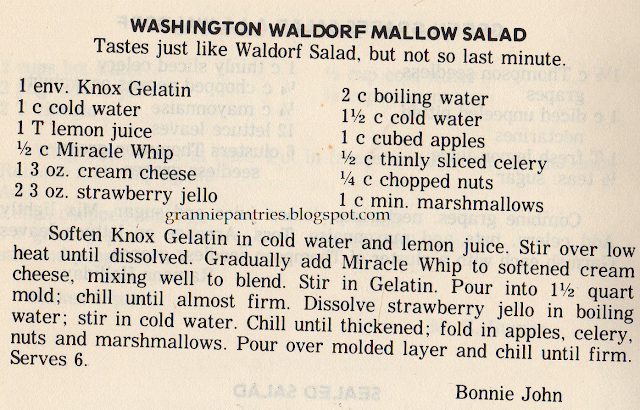My initial post about Eat for Strength: A Vegetarian Cookbook (Agatha Thrash, M.D., copyright 1979, though mine is a revised edition from 1983) focused mostly on its intricate and bizarre rules about what good vegetarians couldn't eat (including baking powder, baking soda, most spices, and mushrooms!). I was also fascinated by the book because of its early attempts at making meat substitutes.
Sure, there were the types of loaves or roasts that littered early vegetarian cookbooks, like this Holiday Roast.
Since it's composed mostly of various starches with onion and a bit of sage, I imagine eating it was pretty much like trying to pretend that eating a glob of (very lean) stuffing was the same as having the turkey.
And there were some burger-ish things, like Spaghetti and Burger Balls.
The burger balls even have protein in the form of gluten-- the old-fashioned kind that started with eight cups of whole wheat flour and a ton of underwater kneading. (I just measure out some pure gluten flour if I want to make gluten "meat" now!) I'm not sure why the sauce has so little seasoning, though, as basil, parsley, and rosemary are allowed on this diet, but not included in a sauce where they might be expected.
There's even a picture of spaghetti and burger balls in glorious black-and-white.
Good luck telling the sauce apart from the burger balls. Everything just looks gray and dense.
The book's meat substitutes don't stop at the usual roasts/ loaves/ burgers of the times, though. There's a vague attempt at chicken in "Arroz con Pollo."
The "pollo" is just garbanzos, though, so it's not a particularly extravagant attempt at chicken.
There's a vague attempt at tuna in the appetizingly-named "Cereal Tuna" Salad.
It's garbanzos in cream of wheat with some green pepper, celery, soyonnaise, and olives. (I thought the garbanzos were supposed to be the "tuna" element, but the title seems to suggest it's the cream of wheat. Who knows? None of it seems very tuna-esque.)
There's a vague attempt at salmon in "Salmon Loaf."
It's mostly just tomato juice thickened with soy flour, so my guess is that there is no real attempt to make it taste like salmon. The pink from the tomato may just kind of look salmon-ish? In any case, the instructions include the phrase "Do not be disappointed," so readers know to set their expectations low.
This book even has attempts at imitation processed meats that I wouldn't expect until fairly recent (meaning the last 20 years or so) vegetarian cookbooks. There's a Bologna.
I can't imagine that this mixture of nuts, cracker crumbs, whole grain flour, and celery salt has anything in common with bologna-- either in color or flavor-- but I guess the fact that it is supposed to be baked in large greased soup cans means it will be round, and that's close enough as far as Agatha Thrash is concerned.
And finally, there are Homemade Hotdogs!
Alternate title: Beet Juice Grits with Onions. I especially love the shaping instructions: "Spoon onto platters in hotdog shaped mounds." Yes, "mound" is definitely the shape I associate with hot dogs. Those mounds get cooled, rolled in wheat germ, and then baked and toasted ("if browning is desired" because not everyone would want the extra flavor from browning). I can't even begin to imagine what beet juice grits on a whole wheat bun with mustard and catsup might taste like, but I'm still impressed that a weird, ultra-puritanical vegetarian health food cookbook from the '70s would even deign to attempt a hot dog.
I will admit that I've made my own versions of some of these (including homemade veggie dogs), and I am super glad for modern recipes that aim higher than making something that may vaguely resemble the item they're supposed to emulate (if you squint hard and you're lucky). I'm also super glad to have records of these amusing ancestors of the recipes I occasionally try out now, even if the old ones are only good for laughs.
If this all seems to complicated for you, though, you can just stick to the old favorites like a vegetable salad.
By which, of course, I mean a platter covered with whole, unadorned raw vegetables. You know. Salad.
Then finish up with a fresh fruit platter.






















































